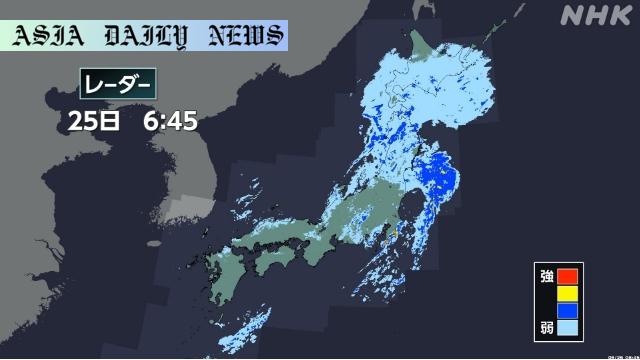Heavy Rainfall: Weather officials warn of landslides, flooding, and swollen rivers as heavy downpours impact eastern Japan.

Severe Rainfall Hits Shikoku and Tokai Regions
The eastern parts of Japan have been hit by unrelenting rainfall over the weekend, with weather officials issuing warnings about dangerous conditions such as landslides, flooding, and swollen rivers. Areas such as Shikoku and Tokai experienced a deluge starting Saturday evening, escalating into the early hours of Sunday. The Japanese Meteorological Agency noted that a low-pressure system carrying heavy rain clouds caused this extreme weather, further exacerbated by a frontal system.
The downpours have been particularly alarming in specific parts of Mie and Shizuoka Prefectures. Toba City, located in Mie, recorded a staggering 71 millimeters of rain within one hour around 1 a.m. on Sunday morning. Similarly, Omaezaki City in Shizuoka recorded 31.5 millimeters of rain in one hour early Sunday. These figures highlight just how intense the rainfall has been.
Due to these extreme weather events, landslide warnings were quickly issued in sensitive areas such as Tokushima and Mie prefectures. Though brief, these warnings underscore the unpredictable nature of the conditions and the need for alertness among residents and local authorities.
Impacts on Eastern Japan’s Pacific Coast
The Pacific coastal regions of eastern Japan are particularly vulnerable due to their terrain and low-lying areas. As the low-pressure system and its accompanying front sweep across the region, the likelihood of heavy downpours intensifies. The weight of the rain can destabilize slopes and mountainsides, increasing the risk of mudslides. Already swollen rivers could breach their banks, putting nearby settlements at significant risk. Additionally, urban areas with improper drainage systems may face widespread flooding, causing disruption to transport and infrastructure.
The Meteorological Agency warns that the worst of the rain may further peak during the morning hours of Sunday. Residents along the Pacific side are advised to remain vigilant, keeping an ear to updates and alerts. Preparations, such as securing loose outdoor items, having emergency supplies ready, and knowing evacuation routes, can significantly mitigate the risks posed by this unpredictable weather.
Call for Extreme Vigilance by Weather Officials
Weather officials have doubled down on their message, requesting extreme caution among the populace. In addition to threats from landslides and flooding, there are additional concerns about lightning, gusty winds, and even tornadoes. Such conditions not only cause physical damage but can also pose serious safety risks to individuals caught off guard. Coastal areas that are already dealing with surging waves must contend with possible wind speeds that can uproot trees or damage housing structures.
In light of these threats, local governments in eastern Japan are advised to stay in close communication with weather agencies, disseminating timely alerts and updates. Schools, businesses, and essential services may need to consider temporary closures or adjustments to ensure public safety. The emphasis remains on proactive measures to reduce loss of life and property damage.
The Broader Impact of Extreme Weather
This incident sheds light on the increasing intensity of weather phenomena, a trend possibly tied to climate change. Japan, being a nation prone to natural disasters such as typhoons and earthquakes, must continue to evaluate its disaster preparedness strategies. This includes enhancing infrastructure resilience, improving early warning systems, and educating the public about best practices during adverse weather conditions. Nations globally can learn from these unfolding developments, looking deeper into how urban planning and environmental management can coexist with the growing unpredictability of the climate.
Commentary
Addressing the Urgency of Weather Alerts
The recent torrential rains hitting eastern Japan are a strong reminder of nature’s unpredictability and the necessity of maintaining vigilance in the face of potential disasters. As reports suggest, significant rainfall has already caused problems for residents in Shikoku and Tokai, with other regions on high alert. These instances highlight the importance of early warning systems and proper response strategies. Japan’s steadfast ability to cope with natural challenges is commendable, but continuous upgrades to its forecasting systems will assure comparative confidence in the future.
The Growing Impact of Climate and Geography
Japan’s geographical position makes it particularly vulnerable to weather-related disasters, be it typhoons, landslides, or flood events. With rainfall escalating in intensity, such as seen in Toba and Omaezaki, it’s critical that individuals living in precarious areas prioritize their safety protocols. Leaders and local authorities must focus on creating sustainable solutions—not only for immediate concerns but also to counter the growing pressures of climate change. Policies should be transparently implemented to mitigate the vulnerabilities exposed during events like this.
Learning Lessons For the Future
Adverse events such as this offer unique learning moments, compelling us to prepare better for the next occurrence. The warnings issued during this particular period serve as a wake-up call for communities and governments alike. Decisions about resource allocation, urban planning, and environmental protection should take weather patterns into significant consideration. By investing in preventative infrastructure and very local-driven climate education for communities frequently hit, Japan can continue to exemplify global disaster management standards.


